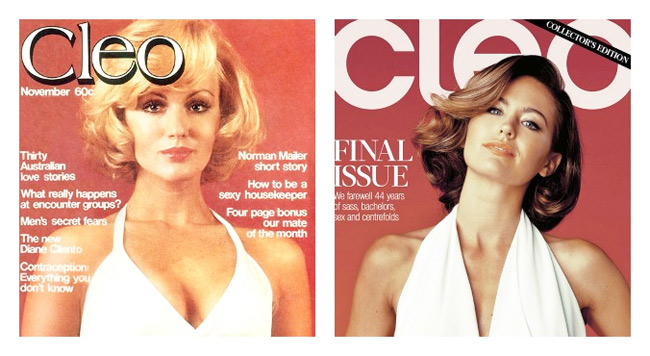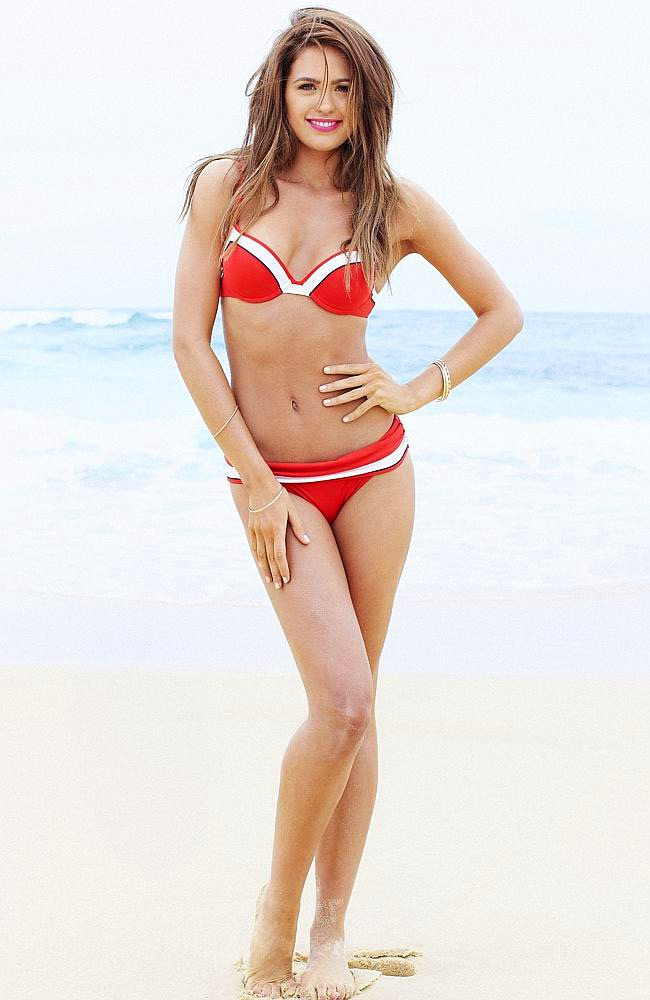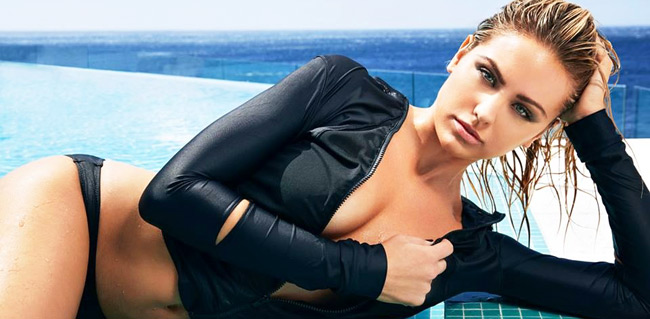Jesinta Campbell Miss Universe Australia 2010 honored to be on Cleo magazine last cover

Jesinta Campbell Miss Universe Australia 2010 is honored to be
selected to feature on the iconic Cleo magazine last cover which
closing after 44 years. Jesinta Campbell has been on Women
Fitness where she spoke about her diet, workout and beauty
secrets with Namita Nayyar President Women Fitness.
Cleo is an Australian, New Zealand, South African, Malaysian,
Singaporean, Thailand and Indonesia monthly women's magazine.
Aimed at an older audience than the teenage-focused Dolly, Cleo
is published by Bauer Media Group in Sydney and known for its
Cleo Bachelor of the Year award.
Launched in November, 1972 under the direction of Ita Buttrose,
the magazine's founding editor, Cleo became one of Australia's
most iconic titles due to its mix of seemingly controversial
content, including the first nude male centerfold and detailed
sex advice. Now entering its 43rd year in print, Cleo remains a
significant source of information for young women on topics
ranging from fashion, beauty and celebrity news to social and
lifestyle issues.
According to the magazine's editorial philosophy, "Cleo gets
women, and it also strikes the perfect balance, offers a bright,
light-hearted tone and aesthetic without shying away from the
more serious issues that are important to their readers.".
Audited circulation in June 2014 was 53,221 copies monthly.
Readership numbers for September 2014 are estimated to be
173,000. With a strong online presence of 300,000+ visitors
monthly, the magazine has successfully established its brand
online. In addition, Beauty Bites, Cleo's digital app, offers an
interactive component to technologically minded Gen Y readers,
including how-to video tutorials, expert advice and
reader-generated content.

Bauer announced on 20 January 2016 that the March issue of Cleo
will be its last.
In the early 1970s, journalist and editor, Ita Buttrose, and
Kerry Packer, heir to what was then Australia's most influential
publishing house, Australian Consolidated Press (ACP), created a
new and bold Australian women's magazine which would become an
instant sensation. Cleo was modelled on Cosmopolitan after the
Packers lost the rights to the latter title to rivals Fairfax.
The first issue was launched in November 1972, the same month
that Gough Whitlam came to power in Australia.
In the original promotional video for Cleo, Buttrose observes
"the rapidly changing personality of the Australian woman." In
an era when hopes for social and political change were high,
Cleo was a fitting and welcome addition for women aged between
20 and 40 who were looking for something more than the recipes,
knitting tips and coverage of royal births and weddings that the
Australian Women's Weekly focused on at the time.
Cleo was politically provocative (but not aggressive) with its
journalism. Alongside articles on group sex, contraception,
"happy hookers" and Jack Thompson as the first nude "Mate of the
Month", the launch issue featured tips on "How to be a sexy
housekeeper." In stark contrast to the lack of literary content
in modern glossy magazines, Buttrose ran a short story by Norman
Mailer, a prominent author at the time. This trend continued in
subsequent issues.
In two days, 105,000 copies of the first issue were sold and by
the end of its first year circulation reached 200,000. When the
magazine conducted the first national readership survey in 1974,
figures revealed that 30 percent of women aged between 13 and 24
read Cleo every month.

Through Cleo, feminism became a part of women's everyday lives
and of their identity.
Ita Buttrose and her staff were committed to many of the ideas
of women's and sexual liberation. However, it is important to
note that Cleo's editorial agenda was that of liberal rather
than radical feminism. In her first editorial letter, Buttrose
described who she thought the Cleo reader was: "You're an
intelligent woman who's interested in everything that's going
on, the type of person who wants a great deal more out of life.
Like us, certain aspects of Women's Lib appeal to you but you're
not aggressive about it." (1972).
The feminist tone and ideas proliferated on the pages of Cleo
throughout the 1970s. Every month, there were feature articles
covering issues including: the work/life balance, the pressure
to get married and raise a family, abortion, contraception,
women's education, domestic violence and rape. "The celebrities
Cleo chose to interview were women who had succeeded in
politics, business and culture. There were also discussions of
the Women's Liberation Movement itself, with writers for and
against".
Ordinary, every-day women gained knowledge and understanding of
feminism through the pages of Cleo. The magazine helped create
the feminist public sphere, opening doors for discussions about
new ideas which modern women treat as mainstream today.
Cleo pushed boundaries in mainstream publishing with candid
articles on topics ranging from sex toys, fantasies and orgasms,
to lesbianism and contraception. "We wrote about sex as if we
had discovered it", recalls Buttrose.
Videos
All content on this site is copyright of Women Fitness and no part of any article found on this site may be reproduced without an express permission and highlighted, do follow link crediting http://www.womenfitness.net/ or preferably the original page as the source. This interview is exclusive and taken by Namita Nayyar President womenfitness.net and should not be reproduced, copied or hosted in part or full anywhere without an express permission.
All Written Content Copyright 2016 Women Fitness
